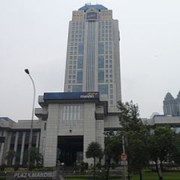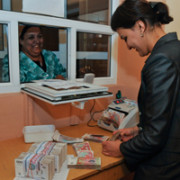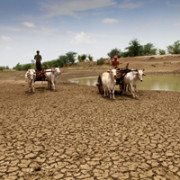Archive | Finance sector development RSS feed for this section
Finance sector development, Industry and trade
 Finance sector development
Finance sector development
 Economics, Finance sector development
Economics, Finance sector development
 Finance sector development
Finance sector development
 Finance sector development
Finance sector development
 Finance sector development
Finance sector development
 Finance sector development
Finance sector development
 Economics, Finance sector development
Economics, Finance sector development
 Finance sector development
Finance sector development
 Finance sector development
Finance sector development

Japanese banks’ appetite for economic partnership agreements

When viewed through the lens of trade deals negotiated with the Association of Southeast Asian Nations (ASEAN), Australia, and the Trans-Pacific Partnership (TPP), Japan has shown recent willingness to engage in global free trade. However, is there any indication that these deals are striking a chord where it matters most, with Japan’s services sector, which comprises 70% of its economic activity?
Loan-to-value policy as a macroprudential tool: The case of residential mortgage loans in Asia

The global financial crisis of 2007–2009 underlined the need for central banks and financial regulators to take a macroprudential perspective on financial risk, i.e., to monitor and regulate the buildup of systemic financial risk in the economy as a whole, as opposed to simply monitoring the condition of individual financial institutions (microprudential regulation). This has been highlighted in numerous reports, e.g., G30 (2009), IMF (2009), Brunnermeier et al. (2009), and TdLG (2009). The regulatory response to this in advanced economies, under the guidance of the G20 and the Financial Stability Board, has tended to focus on strengthening the liability side of banks’ balance sheets by enforcing stricter capital adequacy requirements, including the introduction of a countercyclical buffer and the introduction of liquidity requirements (see, e.g., BIS 2010a).
Currency arrangements in the Pacific—time to re-think?

The Pacific developing member countries (DMCs) of the Asian Development Bank are a heterogeneous group of economies with different levels of economic development and economic size. However, when it comes to choosing an optimal exchange rate, the Pacific DMCs face similar challenges. All of the Pacific economies are relatively small and have underdeveloped financial and exchange rate markets.
3 ways to serve Asia and the Pacific’s ‘unbanked’

Every time I stop and withdraw cash from an ATM or use my credit card to buy something online, I wonder how many people in Asia have access to such services. In fact, these simple transactions are beyond the reach of 45% of adults in East Asia and the Pacific alone. They are excluded from the formal financial system and will remain so until they open a bank account.
“Grexit” and yuan devaluation could put significant pressure on Asian currency pegs

Already driving a housing bubble in all major Asian cities from Seoul to Jakarta, significant hot money inflows are what Hong Kong, China and Singapore seek to avoid. However, Greece’s exit from the eurozone coupled with subsequent quantitative easing by the People’s Republic of China (PRC) to jump-start flagging growth could quickly exacerbate this Asian dynamic.
Why do we need financial education in Asia?

This article assesses the case for promoting financial education in Asia. It argues that the benefits of investing in financial education can be substantial. Data are limited, but indicate low financial literacy scores for selected Asian countries. As economies develop, access to financial products and services will increase, but households and small and medium-sized enterprises (SMEs) need to be able to use the products and services wisely and effectively. More effective management of savings and investment can contribute to overall economic growth. Moreover, as societies age and fiscal resources become stretched, households will become increasingly responsible for their own retirement planning. Asia’s evolving experience suggests that more national surveys of financial literacy are needed and that coherent, tailored national strategies for financial education are essential for success.
The financial sector needs to be driving the green transformation

Many Asian countries have set ambitious targets for climate change mitigation. Governments all over the region are devising green growth strategies, aiming to reconcile economic growth with low carbon emissions as well as trying to limit other forms of environmental degradation such as soil, water, and air pollution. What is needed is no less than a “green transformation” to put green growth at the heart of development (OECD 2013). To achieve such a green transformation, large investments will be needed in renewable energy generation, energy efficiency, smart transportation networks, and many other areas that will help the shift toward sustainable patterns of production and consumption.
Five bond market trends to watch out for in 2015

As 2015 gathers pace, the world seems to be entering a more uncertain and unpredictable phase. With the end of the quantitative easing by the Federal Reserve, we are entering an era of tighter global liquidity. However, this might be offset to a certain extent by more aggressive monetary policy actions from the Eurozone and Japan. The plunge in oil and other commodity prices should help reduce inflationary expectations but could also presage a weaker economic environment. All these point to a more volatile environment, making it a more challenging year for Asian bond markets.
Renminbi stepping in right direction toward internationalization

Over the past several decades, we have seen how the People’s Republic of China’s (PRC) high economic growth and increasing economic integration with other countries have led to a dramatic increase in the PRC’s clout in global output and trade. Just look at the facts. The PRC is the world's second largest economy, accounting for 12% of global gross domestic product in 2013. It is also the world's largest exporter and second largest importer, accounting for about 12% of world trade in 2013. Attracting more than $110 billion in foreign direct investment (FDI) in 2013, the PRC is the world's largest developing country recipient of FDI inflows. It is also the world's largest holder of FX reserves, with a total of $3.8 trillion in reserves at the end of 2013.
Banking integration in ASEAN gathers pace

The ASEAN Economic Community, planned to come into effect in 2015, is expected to liberalize goods, capital and skilled labor flows in the ASEAN region. While there has been considerable progress in the area of trade integration, financial integration still lags behind. The ASEAN Banking Integration Framework, which aims to liberalize the banking market by 2020, could help pave the way for further integration and the entry of ASEAN banks into regional banking markets.


Search
Subscribe / Connect to Asia Pathways
Subjects
- Accelerating Progress in Gender Equality
- Addressing Remaining Poverty and Reducing Inequality
- Agriculture and natural resources
- Capacity development
- Climate change
- Economics
- Education
- Energy
- Environment
- Finance and Innovation
- Finance sector development
- Gender
- Globalization and Economic Stability
- Governance and public sector management
- Health
- Human Capital Development for Inclusive Growth and Shared Prosperity
- Industry and trade
- Information and Communications Technology
- Infrastructure
- Making Cities More Livable
- Miscellaneous
- Population
- Poverty
- Private sector development
- Regional cooperation and integration
- Sanitation
- Social development and protection
- Strengthening Governance and Institutional Capacity
- Subjects
- Transport
- Uncategorized
- Urban development
- Video Blog
- Water
Recent Posts
- The Promise and Perils of Mother Tongue-Based Education
- From Crisis to Resilience: The Evolution of the Banking Sector in Asia and the Pacific
- Tariffs on the Table: What Could Be Asia’s Next Move?
- Investing in Childcare a Win for Women and the Economy
- Flush and Flourish: Upgraded Toilets Can Transform Lives in Rural Asia




Recent Comments